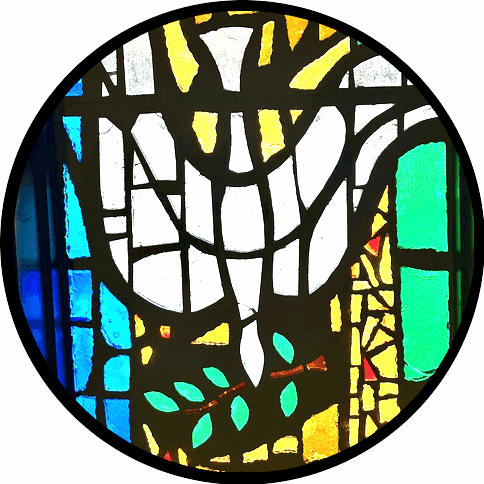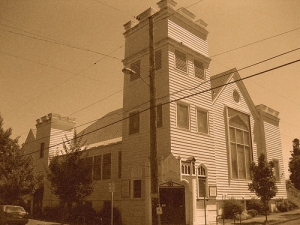
Portland Monthly Meeting began in 1893, in the era known as the Gilded Age, beautiful on the surface, but corrupt underneath. During the Gilded Age, the time between the end of the Civil War and the beginning of World War I, America moved with amazing speed from a nation of farmers to an industrial empire. Such rapid expansion created great wealth for a few and untold suffering for many. As fortunes swelled so did corruption.
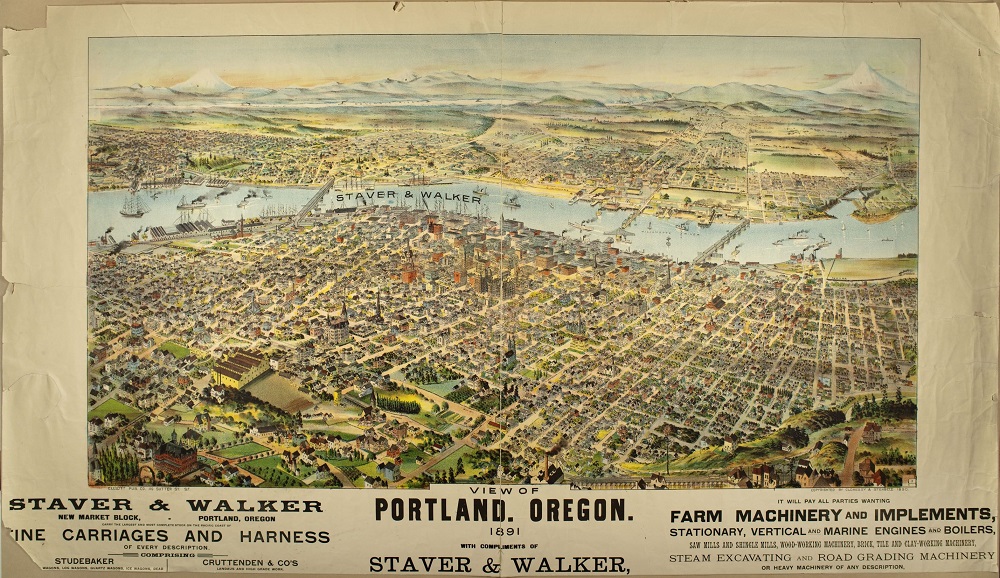
In the period after the Civil War, the major social trend in America was the rise of the city. Portland, incorporated in 1851, was no exception. By 1891 Portland was a thriving western metropolis with a population on 62,000 and an area of 26 square miles (see Staver & Walker map above). Between 1890 and 1900 Portland was the third fastest growing city in the United States. Its population, with the exception of the Chinese (Portland had the second largest Chinese colony in the U. S.) enjoyed life in an atmosphere of growth and prosperity in a pleasant city with a unique natural setting. Harvey Scott, editor of The Oregonian, claimed Portland was “a well-balanced, civic and social organism” with few of the problems of large eastern cities. In proportion to its population it was one of the richest cities in the world! However, beneath the veneer of affluence was a city built on civic corruption—gambling, liquor and organized prostitution, and on the backs of Chinese immigrant labor.
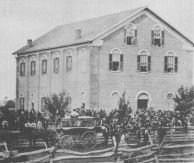
The year 1893 however, while opening in great prosperity, ended in deep depression. By the summer of 1893 a severe economic depression engulfed all of Portland. While economically everything came to a halt in the summer of 1893, and “men walked the streets, idle and hungry,” religiously a new church was born, Portland Monthly Meeting. It is not known how the small community of Quaker families in Portland were affected by the depression, or whether it had any impetus in the creation of the church or the bonding together of the Quaker community in the depressed city. But its beginnings were characteristically humble. Clarkson and Esther Terrell, (originally from Oskaloosa Monthly Meeting, Iowa) who lived in East Portland in what was then the remote outskirts of the city, organized a Sunday School in the early part of 1890. The Newberg Quarterly Meeting records the following minute in August 9, 1890:
“A meeting and Sabbath School have been organized in Portland and held since June 1st with increasing interest and encouraging prospects. The securing of grounds for the meeting in Portland and building a meeting house should be carefully looked after.” (qtd. in H. S. Nedry, “The Friends Come to Oregon,” Oregon Historical Quarterly, Vol. 45, No. 4, Dec. 1944, p 320).
The Newberg Graphic records the following news item on May 5, 1893:
“Rev. Thomas C. Brown goes to Portland next Sunday to dedicate a Friends church on the east side. The members of the church in the city have purchased a school house which they have fitted up for a church.”
Portland Monthly Meeting was officially established on June 5, 1893 with 31 charter members. (This was just before Oregon Yearly Meeting was established on June 27, 1893 under Iowa Yearly Meeting.) Its meetings were held until 1904 in the school house located on Harrison and Marguerite Ave. (now 35th St.) which was apparently transformed into a church by the addition of a steeple (image at top of page). One source claims it was surrounded by a frog pond.
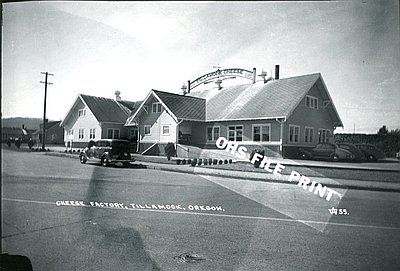
East Portland had been incorporated as a city in 1870. In 1891 it merged with Old West Portland. In 1870 East Portland had four churches (two Methodist, one Episcopal, and one Lutheran) a sawmill and a gristmill. In 1891 a one half-mile area was added to East Portland, called Sunnyside, bordered on the south by Hawthorne Ave. and located between East 33rd and 44th Avenues. This newly incorporated suburb was called Sunnyside after the name of the real estate company that developed it, the Sunnyside Land and Improvement Co. The Willamette Bridge Railway Co., which began operation in 1889 opened up this area for development. When a steam motor railway was placed on East Morrison St. and extended to East 20th, many wondered who would ever move that far out. The Sunnyside district was the site of the first neighborhood shopping center in East Portland. A “new and modern home” in the Sunnyside district cost around $1500 and could be purchased by a skilled worker. By 1915 the area was a well-established residential working class neighborhood. The congregation of Portland Monthly Meeting in its formative period reflected its urban and working class surroundings. The majority of its members would be drawn from the middle class, skilled workers, artisans, and local merchants. However at least two charter members, Rebecca Mendenhall Lewis (1814-1901) and T. S. Townsend were prominent in the economic development of Portland. The Lewis family was connected to the building of the first railroad in Oregon, and the Townsend family was in the creamery business and built the first cheese factory in Tillamook.
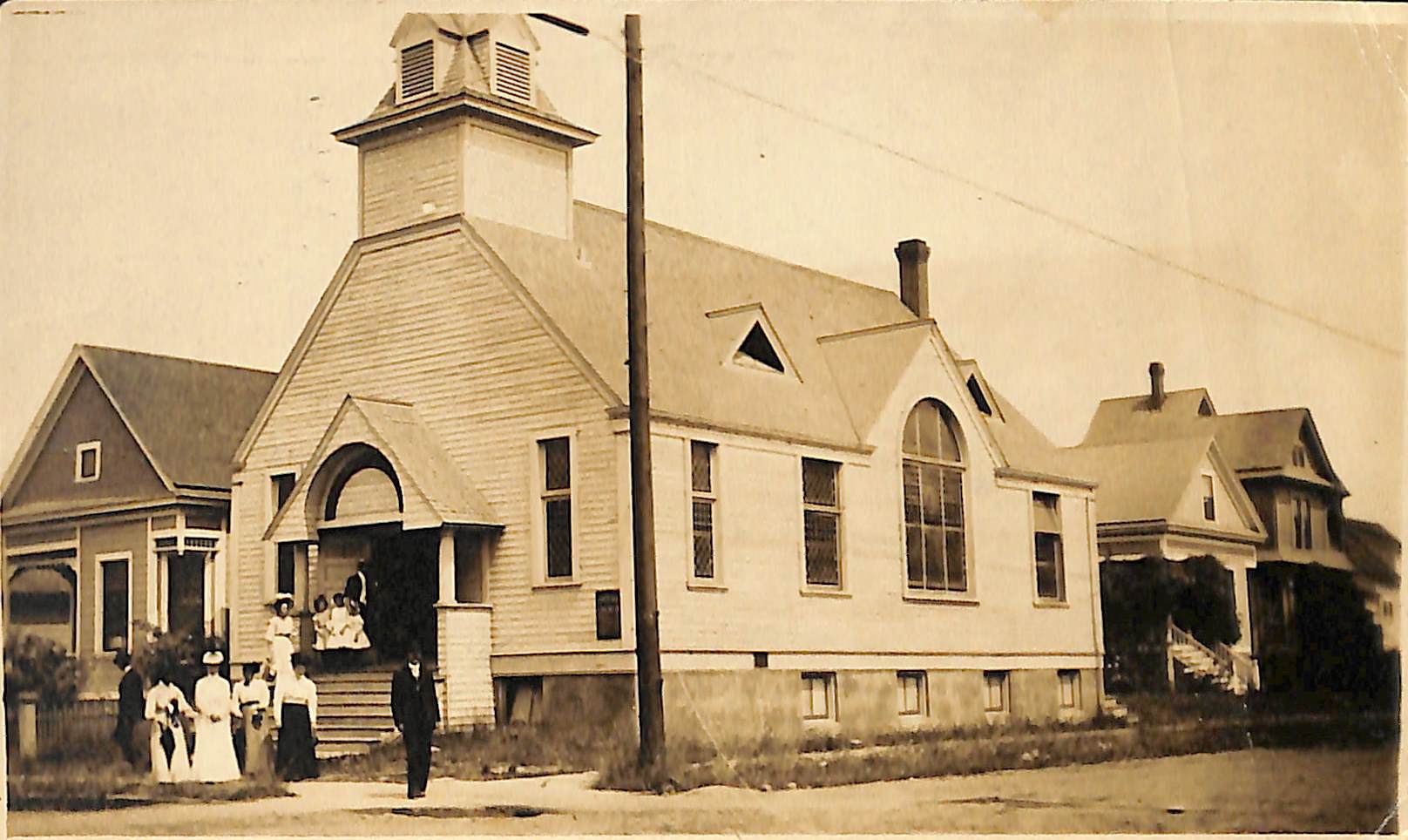
The sequence of buildings used by Portland Monthly Meeting, also called Sunnyside Friends, First Friends, and finally Reedwood Friends, graphically document the upward social mobility of its congregation, a common trend among urban Protestant churches. In the 1890s in Portland the social stratification was reflected by denominational affiliation. The aristocratic elite were bound together through religious ties. The most socially and culturally important church was Trinity Episcopal, followed in social standing by the First Presbyterian, First Unitarian, First Baptist, First Congregational and the Taylor Street Methodist Church. Although the First Unitarian was one of the smallest denominations, its pastor was often referred to as “the conscience of the community” and was the most influential religious leader of the time in Portland. Quakers in Portland were too small to be counted among these established denominations.
In 1894 Portland had one church for every 600 residents. The leading denominations numerically were: Methodist, 21 churches; Presbyterian, 11; Baptist, 10; Roman Catholic, 10; Episcopal, 9; and Lutheran, 9. There were also 25 missions in Portland, over half which ministered to the large number of Chinese immigrants. Among the 31 charter members of Portland Monthly Meeting, one Chinese man named Sam Kee is listed, most likely a product of the mission to the Chinese. Two Black churches, both Methodist African churches, existed to minister to the then strictly segregated Black population. A total of 106 churches, 69 on the East Side and 37 on the West Side had been established by 1894. It is not known if the newly formed Portland Monthly Meeting was significant enough to be counted among Portland’s churches at this time. But it was one of many new churches to be formed in the period from 1891 to 1893 when Portland experienced a 75 percent increase in church construction.
Portland Monthly Meeting became one of seven Monthly Meetings in Oregon. Newberg was by far the largest and most well-established. By 1892 it had erected a large impressive church structure.
Quakerism in the Pacific Northwest was planted during a period of splintering among Friends in the mid to late nineteenth century. The Quakerism that emerged in the Northwest in 1893 was vastly different than the eighteenth century Quietism and from what is now considered “traditional” Quakerism rooted in silent worship and without paid pastoral leadership.
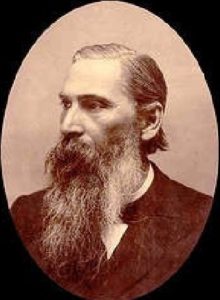
John Henry Douglas (1832-1919) became a leading figure in shaping the theology and spirituality of Quakerism in the Northwest. He served as Superintendent of Iowa Yearly Meeting during the time when Quaker settlers in Oregon were an extension of that Yearly Meeting. Douglas, a charismatic leader with a reformist’s zeal and evangelist’s passion, was well known for his evangelism among non-Quakers and his promotion of the pastoral system, a controversial adaptation among Friends. Oregon Quakers had been worshipping in traditional Quaker style, silently waiting upon the Lord without pastors or pastoral preaching, for 14 years when Douglas travelled to Oregon and California in 1890 and introduced the pastoral system to Friends in the Far West. Two years later he became the first Oregon Friends pastor at Newberg Monthly Meeting. When Oregon Yearly Meeting was officially established the following year, 1893, Douglas became the first Superintendent, firmly planting Holiness theology, evangelism, revivalism, pastoral ministry, and evangelicalism in Northwest Quakerism.
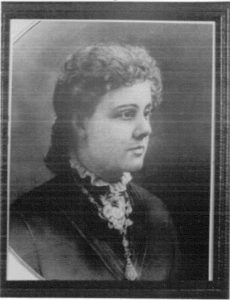
Thus, Portland Monthly Meeting called a pastor to lead the small newly formed congregation. But unlike most churches of the time, and in the tradition of Friends, they called a woman to lead them. Her name was Lida Romick and she came with her companion, Sarah Osmun, from Alum Creek Meeting in Ohio. She served from 1893-1895. The first clerk of Portland Monthly Meeting was T. S. Townsend, assistant clerk, Lydia Gardner (I believe this was Rhonda Cole’s great-great grandmother, the oldest continuing charter member of Reedwood) and treasurer, William Townsend. The first Recording clerk was Corwin A. Townsend and first Trustees, Clark M. Terrell, Samuel Gardner and T. S. Townsend.
Initially called Portland Monthly Meeting of Friends Church, the name incorporated both the traditional Quaker terminology and the revival impulse that changed “meetings” to churches. The name was officially changed to First Friends Church of Portland July 6, 1916, two years before its large new church building was erected at 35th and Main. Portland Monthly Meeting grew steadily year-by-year and was undoubtedly adapting to the mainstream denominations with whom it was now associating.
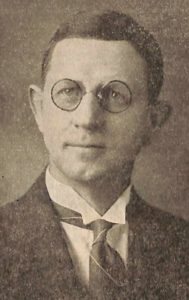
The name change occurred during the influential leadership of Homer L. Cox when the membership more than doubled during his pastorate from 195 to 400. During his pastorate the new church, described as “a new commodious edifice having a seating capacity of 600,” was completed. The new church building did not have a steeple but it did have a large impressive tower that anchored it to the corner. The lovely stained glass windows dedicated to its founding leaders were its most impressive feature. While the building, being a frame structure, could not match the splendor of Portland’s downtown churches, it was clearly the equal of the suburban mainline Protestant churches of its era. A small, but attractive manse was built alongside it.
The church was enlarged several times, and in 1965 Dr. Harlan F. Ong, a prominent Portland physician left a $1.5 million restricted endowment to First Friends Church. Though not a member himself, he valued the ministry of the church to his family and left the money as a tribute to his parents.

With this windfall, First Friends purchased 3.05 acres of property that was once a part of a private botanical garden and tourist attraction called Lambert Gardens. A large, new modern church building designed by a prominent Quaker architect, Donald Lindgrin, was constructed in the Reed neighborhood of Portland in 1969, and the old church building sold to the Mennonites, and thus Reedwood Friends Church was born.
During its first eighty years, Portland Monthly Meeting (later First Friends) had a remarkable history and five new meetings sprang forth from the vision of the meeting: Second Friends (in Lents) in 1909, Piedmont Friends in 1913, Metolius Friends in 1954, Lynwood Friends in 1958, and Clackamas Park Friends in 1965.
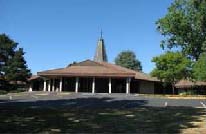
In 1970, First Friends moved into a newly constructed facility in the Reed neighborhood (our current location) and became Reedwood Friends. In 1993, Reedwood celebrated one hundred years as a community.
Source for this material on Portland:
- E. Kimbark MacColl. Merchants, Money, and Power: The Portland Establishment, 1843–1913. Portland: Georgian Press, 1988.
- E. Kimbark MacColl. The Shaping of a City: Business and Politics in Portland, Oregon 1885 to 1915. Portland, Oregon: Georgian Press, 1976.
Click here to download the Reedwood Friends history brochure (pdf).
